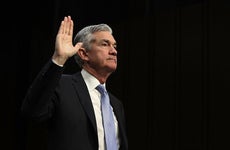Preview of the Fed meeting: What’s next for post-election monetary stimulus?
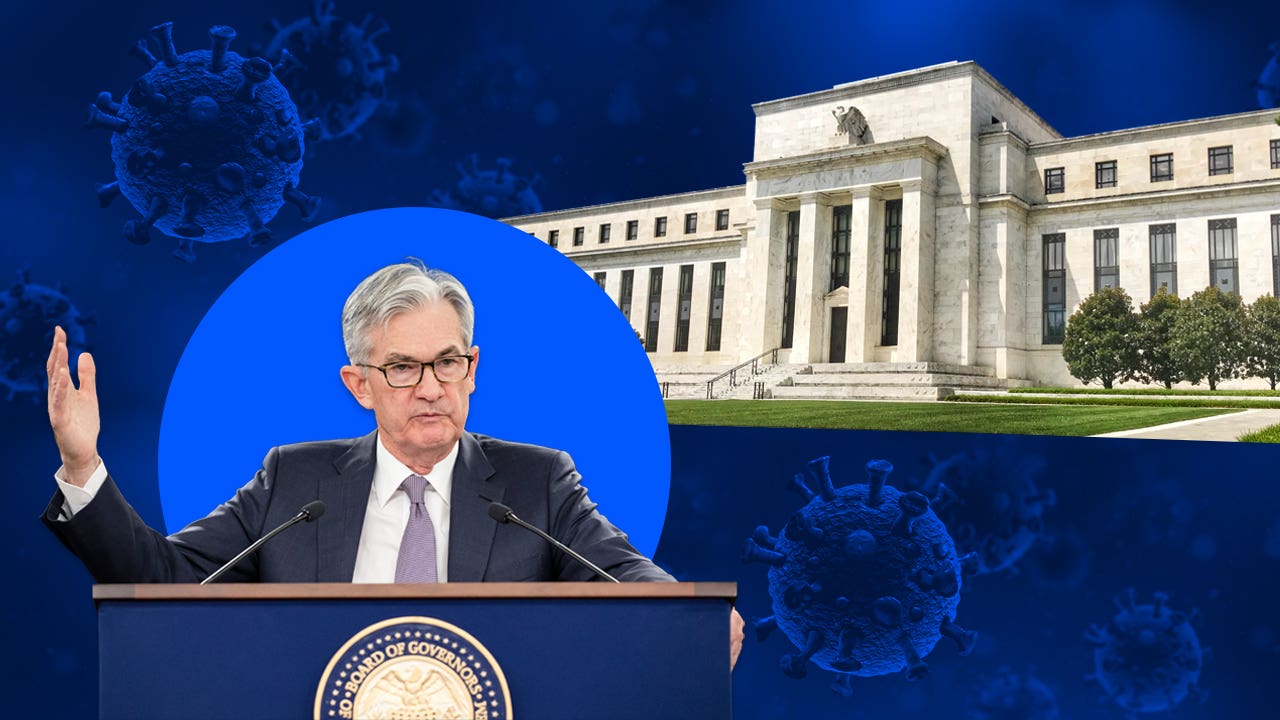
The Bankrate promise
At Bankrate we strive to help you make smarter financial decisions. While we adhere to strict , this post may contain references to products from our partners. Here's an explanation for .
Federal Reserve officials are bound to feel like they’re sitting in the eye of a storm when they gather for their November meeting, with frenzy swirling around them on the heels of a stimulus deal impasse and the presidential election.
The first of those topics might prompt more chatter than usual from Fed Chairman Jerome Powell. The second one, not so much.
Officials on the Federal Open Market Committee (FOMC) aren’t expected to make any changes to interest rates when they wrap up their scheduled two-day meeting on Nov. 5, two days after Americans select President Donald Trump or former Vice President Joe Biden for the Oval Office.
But experts say they could adjust their bond-buying plans to stimulate growth rather than stabilize market functioning, as fears of the U.S. economy’s sputtering rebound grow at a time when markets are again volatile and coronavirus cases are rising. Any of those steps, if taken, are bound to happen without giving a nod to whichever candidate is elected.
“Expect some Pepto-Bismol days,” says Kristina Hooper, chief global market strategist at Invesco. “There are just a number of different catalysts for volatility — from rising COVID-19 infections, to the presidential elections, to a lack of fiscal stimulus. We just have to expect that that’s going to be the environment, and a key tenet is to not react to it.”
Here’s four key themes to keep an eye on ahead of the Fed’s November meeting.
1. Powell will mostly dodge election questions, unless there’s an extreme scenario
The Federal Reserve makes its decisions independent from politics, and that’s a point Powell will likely stress if he’s asked about the elections during the post-meeting press conference.
But even then, some experts see scenarios that might force Powell to forgo his normal hesitance of commenting on the executive branch. One of those possible outcomes: A contested election that travels all the way up to the Supreme Court, similar to what happened in 2000 between former Vice President Al Gore and George W. Bush.
“That introduces a whole other level of uncertainty and turmoil with regards to markets and the economy,” says Greg McBride, CFA, Bankrate chief financial analyst.
Delayed results prompted by mail-in ballots that take days to count, an unpeaceful transfer of power or civil unrest could also cast gloomy storm clouds over the U.S. economic outlook, prompting a response from Powell.
“One of the Fed’s mandates is financial stability, and it may feel as though that at least comments are necessary if the environment feels somewhat chaotic,” Hooper says. “If there’s civil unrest or a contested election that causes a major sell off in markets, I would expect the Fed to at least comment on it and reiterate support for markets.”
A nationwide Bankrate survey from October found that nearly a third of Americans see the presidential election as the biggest risk to the economy.
Even if Powell doesn’t comment on the elections during the press conference, it doesn’t mean officials are unlikely to have a dialogue about it. That’s because whoever ends up occupying the White House and both chambers of Congress could have implications for the size of the next fiscal care package. Economists say a Biden election matched with a Democrat-controlled Senate and House might suggest a larger stimulus bill, leading to a different economic outcome than might happen if Congress remains divided. Most of that color would likely be found in the Fed’s November meeting, released three weeks after the Nov. 5 decision, though only as it relates to the economic discussion.
“Jay Powell, as always, would try to steer away from anything political and only talk about it as it relates to the economy or markets,” Hooper says.
2. Fed officials’ biggest concern is lack of fiscal stimulus
But the ground still looks shaky when it comes to the next fiscal care package. Newly elected lawmakers won’t officially enter Capitol Hill until January 2021. Another round of relief during a lame-duck period in Washington is also unlikely.
That might mean more urgency for Powell and Co. to take additional steps to prod the economy.
“The Fed is looking at the economic situation as a whole,” says Joseph Mayans, principal economist and founder at Advantage Economics who formerly worked as a staffer for U.S. Senator Jerry Moran. “Congress isn’t going to act anytime soon, and there’s only one other person to put in the game. They probably see that their job is to help move the economy toward recovery.”
In his most pointed remarks yet, Powell revealed in an Oct. 6 speech deep worries over too little of a fiscal response. “Even if policy actions ultimately prove to be greater than needed, they will not go to waste,” Powell said. “Too little support would lead to a weak recovery, creating unnecessary hardships for households and businesses.”
A new bond-buying program?
The Fed has already slashed interest rates to zero, unveiled 13 different special lending programs and instituted an “unlimited” bond-buying program. But beyond that, its other tools to help give the economy more juice include adjusting the composition of its debt purchases for more longer-dated assets, which would stimulate the economy and look more like traditional quantitative easing.
Currently, the Fed is purchasing at least $80 billion of Treasurys a month and $40 billion of mortgage-backed securities. Yield curve control is another option, which involves making specific debt purchases to target a certain interest rate, though Fed officials aren’t right now aligned on how exactly to implement it.
“The Fed could wait [until] after this meeting, but they may be taking a little bit of a risk, especially if you’re still going to have these issues,” Mayans says. “They’re going into the back of the drawer and grabbing what they think will be helpful.”
Central bankers may also, however, want to give lawmakers more time to strike a deal before attempting to rev up the economy’s engine. It might also not want to use up all of its ammunition while Treasury yields are still low all across the curve. The 10-year yield was 0.79 percent as of Oct. 28, according to Treasury Department data.
“You don’t put a Band-Aid on before you’re cut; you do it once you’re cut,” McBride says. “If you saw the long end of the curve starting to spike or there were liquidity issues in financial markets, that’s when the Fed would be more likely to attack.”
3. Uptick in coronavirus cases jeopardizes U.S. economic rebound
The Fed is going to need whatever ammunition it has left as the U.S. economy heads for a pivotal point. Cases are rising across Europe, prompting another wave of lockdowns in France and Italy. Experts are also worried about what the flu season, holiday travel and colder weather might mean for new infections. The U.S. on Oct. 29 hit a new record for daily coronavirus cases, surpassing all other new infections counted during the first surge in March and the second in late July and early August.
That could have grave consequences for growth heading forward. Bankrate’s nationwide survey from October also found that more than half (or 57 percent) of Americans are spending less because of economic worries that include both the pandemic and the election.
That won’t bode well for the pace of the rebound moving forward. The U.S. economy is still about 3.5 percent smaller than before the pandemic, even after a record growth surge in the third quarter of 2020, according to the latest data on gross domestic product (GDP) out of the Department of Commerce.
“The uncertainty of election day may have been resolved by the time that the Fed meets, but as we’re seeing, coronavirus is still front and center as a risk to the economy,” McBride says.
4. Running low on ammo, the Fed may be backed into a corner
But all of that signifies a troubling time for the U.S. central bank: The pandemic might be backing officials into a corner, and they have limited options to fight their way out.
Part of the challenge with monetary policy is it’s a blunt instrument, influencing rates and assets across the board rather than providing directly targeted aid to the corners of the economy that might need help the most. Low rates also can’t get rid of the overall cause of the uncertainty: the coronavirus. And for the recovery, mom-and-pop shops that see weaker demand might not want to hire more workers, regardless of how low interest rates are.
“That’s the limits of low interest rates,” McBride says. “The Fed can reduce interest rates, but they can’t manufacture demand. They can just create a backdrop that’s conducive to borrowing and spending once the demand is there.”
The U.S. economy’s race toward recovery might just be one-legged at this point, with Congress currently on the bench and the Fed the only key player in the game. If the Fed feels like it has no other options, Hooper says she could see central bankers turning to something never done before, including helicopter money, where a central bank creates money specifically for government spending or direct payments to individuals. That would be more likely than something as unconventional as negative interest rates, she adds.
“These are extraordinary times, so that’s usually when you see extraordinary measures,” she says.
Others don’t see it coming to that point just yet. The Fed’s most likely steps include adjusting the way its special lending programs work to be more lenient on risk-taking and then revamping the composition of its balance sheet to be more stimulative, Mayans says. Though the biggest fear of all is how much more oomph it can provide the U.S. economy, with interest rates already at historic lows and still not solving the primary source of the economy’s woes.
“The Fed has a lot to talk about, but not a lot that they can do,” McBride says. “Despite the talk about having a full range of tools and being willing to use them, I don’t know that there’s a whole lot they can do right now.”
What this means for you
Some choppy days could be ahead, as investors work through all of the uncertainty rising on the horizon over the next few weeks. But most of these uncertainties are things the U.S. economy has weathered before, Hooper says, from the 2000 election mess to a flu pandemic in the early 1900s.
All of that means it’s important to keep a long-term focus and not let fear impact your investing decisions. Illustrative of that point, markets cratered by more than 30 percent back in March but have already recovered.
“The idea that the Fed has now put the virus at the top of the list, but that it’s also looking at all of these factors tells me that rates are going to be really low for a long time, and there are opportunities that come with that,” Hooper says. “COVID-19 unchecked can create fear and apprehension in markets, but I do believe that monetary policy is more powerful.”
For would-be homebuyers, the Fed’s whatever-it-takes stance means that mortgage rates may fall even lower. Meanwhile, refinancing could free up cash to help you juice up your savings.
“The fundamentals are what you continue to focus on,” McBride says. “Build up your emergency savings, invest for the long haul and pay down high-cost debt.”
Learn more:
Related Articles
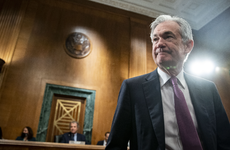
Biden picks Jerome Powell for new term as Federal Reserve chair
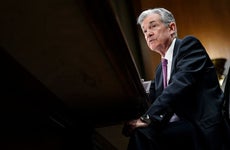
Powell promotes rate pause in final remarks before upcoming Fed meeting
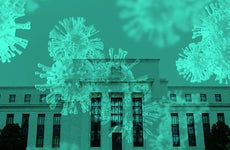
Preview of the Fed meeting: What’s left in Powell’s coronavirus recession playbook?
